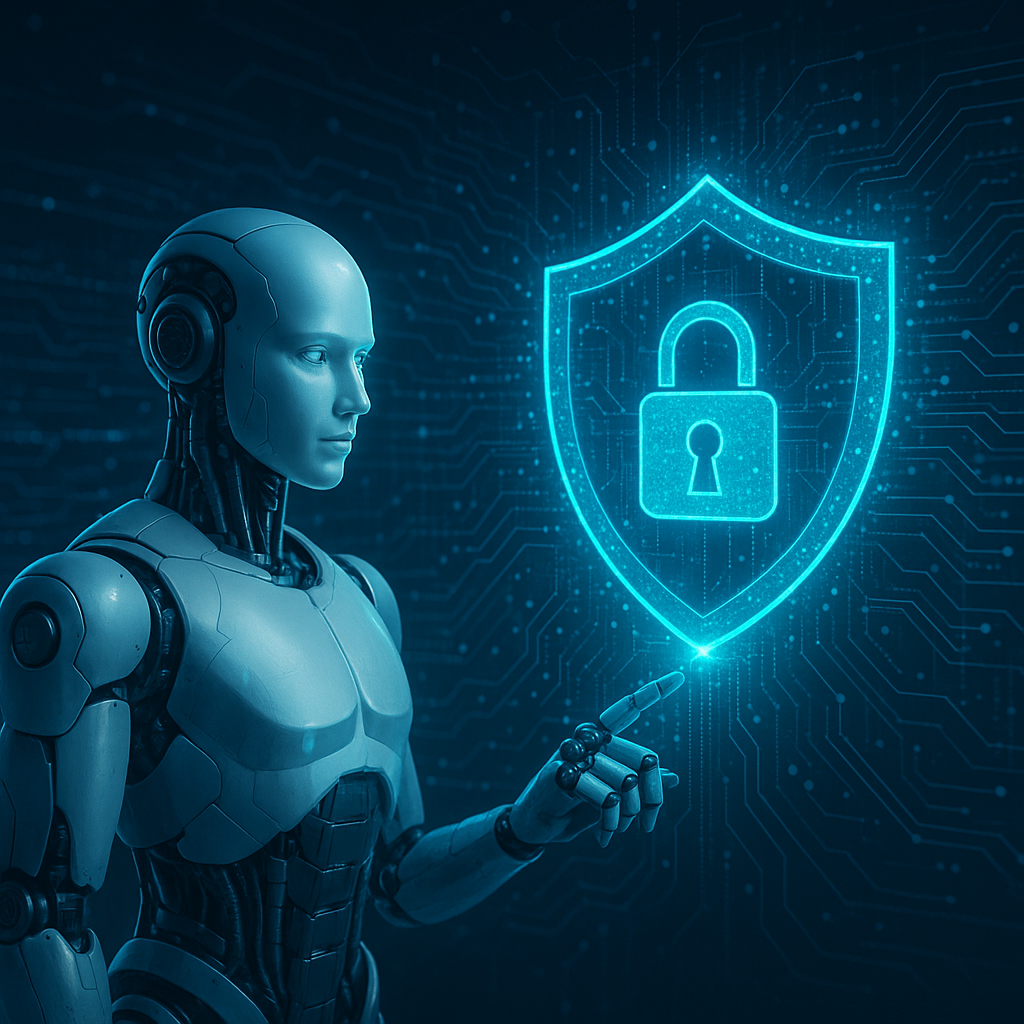
The Ultimate Guide to AI Cybersecurity Solutions in 2025
As cyber threats continue to evolve in complexity and frequency, organizations across the United States are turning to AI cybersecurity solutions to safeguard their digital assets. In 2025, artificial intelligence is not just a buzzword—it’s a critical component of robust cybersecurity strategies. This comprehensive guide explores the latest advancements, top providers, and practical implementation tips for AI-driven cybersecurity in the U.S. market.
What Are AI Cybersecurity Solutions? 🤖🔒
AI cybersecurity solutions leverage artificial intelligence and machine learning to detect, prevent, and respond to cyber threats faster and more accurately than traditional methods. These systems analyze vast amounts of data, identify patterns, and adapt to new attack vectors in real time.
Key Features of Modern AI Cybersecurity Tools
- Automated Threat Detection: Instantly identifies malware, phishing, and zero-day attacks.
- Behavioral Analytics: Monitors user and network behavior for anomalies.
- Incident Response Automation: Reduces response times and human error.
- Predictive Analytics: Anticipates future threats based on historical data.
TIP: AI cybersecurity solutions are especially effective against sophisticated attacks like ransomware and advanced persistent threats (APTs).
Why U.S. Businesses Need AI Cybersecurity Solutions in 2025
The U.S. remains the top target for cybercriminals, with the average cost of a data breach reaching $9.48 million in 2025. Regulatory requirements such as CCPA and HIPAA further necessitate advanced protection.
Benefits for American Organizations
- 🏥 Healthcare: Protects sensitive patient data and ensures HIPAA compliance.
- 💳 Finance: Detects fraudulent transactions in real time.
- 🏢 Enterprise: Safeguards intellectual property and customer information.
- 🏫 Education: Shields student records from ransomware attacks.
Top 10 AI Cybersecurity Solutions for U.S. Companies in 2025
Choosing the right AI cybersecurity solution can be challenging. Here are the top 10 platforms dominating the U.S. market this year:
- CrowdStrike Falcon
- Darktrace
- Palo Alto Networks Cortex XDR
- IBM Security QRadar
- Microsoft Defender for Endpoint
- SentinelOne Singularity
- Fortinet FortiAI
- Sophos Intercept X
- CylancePROTECT (BlackBerry)
- FireEye Helix
Side-by-Side Comparison Table
| Rank | Solution Name | AI Capabilities | Best For | U.S. Market Focus | Price Tier |
|---|---|---|---|---|---|
| 1 | CrowdStrike Falcon | Threat Detection, EDR | Enterprise, SMB | High | $$$ |
| 2 | Darktrace | Autonomous Response | All Industries | High | $$$$ |
| 3 | Palo Alto Cortex XDR | Analytics, Response | Large Enterprise | High | $$$$ |
| 4 | IBM Security QRadar | SIEM, AI Analytics | Enterprise | Medium | $$$ |
| 5 | Microsoft Defender Endpoint | Endpoint Protection | SMB, Enterprise | High | $$ |
| 6 | SentinelOne Singularity | EDR, Automation | All Sizes | Medium | $$$ |
| 7 | Fortinet FortiAI | Malware Detection | Enterprise | Medium | $$$ |
| 8 | Sophos Intercept X | Deep Learning | SMB, Education | Medium | $$ |
| 9 | CylancePROTECT | Predictive AI | SMB, Enterprise | Low | $$ |
| 10 | FireEye Helix | Threat Intelligence | Enterprise | Medium | $$$$ |
TIP: Consider your organization’s size, industry, and compliance needs when selecting an AI cybersecurity solution.
How AI Cybersecurity Solutions Work: A Technical Overview
AI-powered cybersecurity platforms use a combination of machine learning algorithms, neural networks, and big data analytics to protect digital environments.
Example: AI-Based Intrusion Detection System
import numpy as np
from sklearn.ensemble import IsolationForest
# Simulated network traffic data
data = np.random.rand(1000, 10)
# Train Isolation Forest for anomaly detection
model = IsolationForest(contamination=0.01)
model.fit(data)
# Predict anomalies
anomalies = model.predict(data)
print("Anomalies detected:", np.sum(anomalies == -1))
TIP: AI models must be regularly updated with new threat intelligence to remain effective.
Implementing AI Cybersecurity Solutions: Best Practices for 2025
1. Assess Your Risk Profile
Identify critical assets and potential vulnerabilities before deploying AI tools.
2. Integrate with Existing Security Stack
Ensure compatibility with your current firewalls, SIEM, and endpoint protection.
3. Train Your Team
Educate IT staff on how to interpret AI-generated alerts and automate responses.
4. Monitor and Fine-Tune
Continuously evaluate AI performance and adjust parameters as threats evolve.
5. Ensure Compliance
Verify that your solution meets U.S. regulatory standards for data privacy and security.
TIP: Start with a pilot program to measure ROI and effectiveness before full-scale deployment.
The Future of AI Cybersecurity Solutions in the U.S.
AI cybersecurity solutions are rapidly advancing, with trends in 2025 including:
- Self-Healing Networks: Systems that automatically repair vulnerabilities.
- Explainable AI: Transparent decision-making for compliance and trust.
- AI-Driven Threat Hunting: Proactive identification of hidden threats.
- Integration with IoT Security: Protecting connected devices across industries.
Conclusion
AI cybersecurity solutions have become indispensable for U.S. organizations facing an ever-changing threat landscape in 2025. By leveraging advanced AI and machine learning, businesses can detect threats faster, respond more effectively, and ensure compliance with stringent regulations. Whether you’re a small business or a large enterprise, investing in the right AI cybersecurity platform is essential for safeguarding your digital future. Stay proactive, stay secure, and let AI be your strongest line of defense.